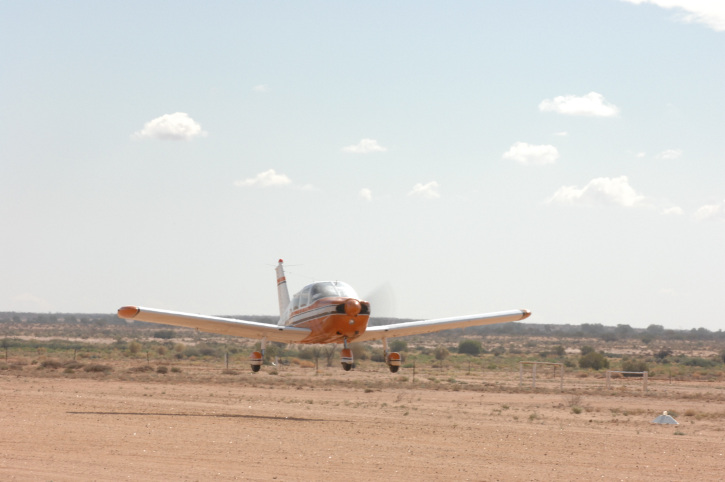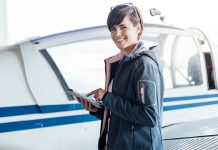Non-controlled operations remain a safety challenge in aviation. Despite growing awareness and improvements to technology, near misses and collisions continue to occur.
Recent Australian Transport Safety Bureau (ATSB) investigations highlight just how quickly things can go wrong – and what pilots can do to avoid similar incidents.
Why it matters
Australia covers 11% of the world’s airspace, and around 70% of that is Class G – non-controlled. In the past 6 months alone, the ATSB has published 4 occurrence investigations involving traffic conflicts in CTAF environments:
- AO-2023-036: Mid-air collision between Jabiru J430 and a Piper PA-25 Pawnee at Caboolture Airfield.
- AO-2023-001: Mid-air collision between 2 Eurocopter EC130 B4 helicopters at Main Beach, Gold Coast.
- AO-2024-009: Near collision between a Beechcraft A36 and a Fairchild SA226-TC at Geraldton Airport.
- AO-2023-050: Aircraft separation issue during take-off involving a Lancair and a Dash 8 at Mildura Airport.
Each incident had its own contributing factors, but common themes emerge – along with practical lessons pilots can apply.
Master your radio equipment
Alerted see-and-avoid is the key principle guiding separation in non-controlled airspace. Radio communication is the primary tool that enables the alerted part – and in each of the 4 cases above, a breakdown in radio communication played a role.
Understanding your own equipment is an essential starting point for safe operations. That includes basics like frequency selection, volume, squelch, and audio selector panels. Less obvious might be knowing which radio to use for CTAF if your aircraft is equipped with multiple radios.
The ATSB’s investigation into the near miss at Mildura revealed that the Dash 8 crew’s use of Comm 2 for CTAF transmissions may have contributed to not hearing the Lancair’s broadcasts. In that aircraft, the Comm 2 antenna was mounted on the underside of the aircraft, while Comm 1 antenna was on the top – offering significantly better signal quality for both transmitting and receiving on the ground.
Not all aircraft are configured like this, and many have VHF Comm 2’s antenna on top specifically for this reason. You can reduce the risk of missed radio calls – both yours and others’ – by preferencing the radio with a higher antenna for CTAF broadcasts.
Confirm you’ve been heard
Even with a correctly tuned radio and structured, concise CTAF calls, you can’t assume other aircraft have heard you. Unfortunately, in non-controlled environments, there are several reasons your message might not have been received or understood:
- Over-transmission, where 2 aircraft simultaneously transmit on the same frequency and block each other (seen in AO-2024-009 and AO-2023-050).
- Radio shielding, where buildings or terrain interfere with transmissions between aircraft (also AO-2024-009 and AO-2023-050).
- Variations in quality of equipment and signal strength, such as those caused by antenna damage or location (seen in AO-2023-001and AO-2023-050).
If you’re unsure whether you’ve been heard, don’t be afraid to address another aircraft directly on the CTAF – either to confirm they received your transmission or to clarify intentions. Something as simple as asking another aircraft to confirm that they will hold short of a runway you are using can increase shared understanding.
Don’t rely on radio alone
Another common trap is assuming that if you don’t hear any radio calls, there isn’t any traffic.
In their investigation into the mid-air collision at Caboolture, the ATSB concluded that the Jabiru involved likely could not transmit or receive radio calls, though the reason could not be determined. In this incident, the Jabiru took off on a cross runway to the Pawnee conducting a go-around. Tragically, the 2 occupants of the Jabiru were fatally injured. The Pawnee landed safely, though with substantial damage.
This event is a sobering reminder that radio should never be your only tool for collision avoidance. Maintaining broad situational awareness is essential in non-controlled environments.
Some practical steps include:
- Maintaining an active visual lookout – not just when turning or entering a runway. For example, spotting an aircraft loading passengers or starting engines gives you an early cue that they’ll be joining traffic soon.
- Making radio calls to the area controller (if available) – this can alert you to fast-moving inbound traffic that may be beyond the range of your VHF radio on the ground.
- Using technology, where appropriate, to make yourself as visible as possible to other aircraft and enhance your situational awareness (see CASA’s Can you be seen? guide for more information).
- Reviewing the ERSA and NOTAMs before your flight – these provide valuable insight into what other airspace users may be present, such as gliders or drone operations.
Vigilance is key
While these incidents offer important lessons, avoiding conflict in Class G airspace ultimately comes down to individual judgement, clear communication, and staying alert every time you fly.
The message for pilots is clear: every time you operate in non-controlled airspace, take the time to build a full picture of what’s happening around you. It’s not just broadcast and go – it’s about communicating effectively, verifying what you hear (or don’t hear), and using every tool available to fly safely.
Resources for flying in non-controlled airspace
Non-controlled operations are a focus of CASA’s Your safety is in your hands campaign. For more guidance, tools and tips, be sure to visit the pilot safety hub.
Further resources
- Be heard, be seen, be safe radio calls booklet
- Can you be seen? ADS-B and transponder guide
- Explaining the rules animation on radio frequencies for non-controlled airspace
- Explaining the rules animation on radio calls
- Advisory Circular AC 91-10 v1.4 – Operations in the vicinity of non-controlled aerodromes






Comments are closed.